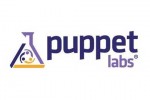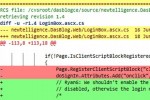Setup Puppet to configure your network servers
Growing companies at some point are faced with the increased workload to setup, configure and maintain their servers and applications. Administrators try to script repetitive tasks and ultimately look for solutions that are scalable and provide a central management tool base. There are several software packages available, commercial and open source ones.
Puppet is probably the most used open source configuration management package available today and more system administrators and software developers are interested in setting it up within their environment. An excellent book about Puppet (Pulling Strings with Puppet) is available and so are numerous online articles and tutorials. However, ...
Free Open Source HTML5 eBook Creator
The Baker framework is a free open source ebook creator, a platform to create books for the iPad and iPhone. The framework was developed by a team of Italian software geeks, allowing designers and web developers to transform fixed-width HTML5 pages into an e-book format and subsequently publish the finished product.
All publishers have to do is follow the Apple App Store submission guidelines. The first step involves creating a HTML5 version of your book with fixed width of 768 pixels that works and looks fine using Safari in iPad, iPhone or via downloadable support CSS at Baker’s site.
Keep all files ...
Install and configure puppet server on Ubuntu
Before we install and configure puppet server (puppetmaster), ensure that your network is properly setup with static ip addresses and that servers can communicate with each other.
Configure Puppet Server on Ubuntu 10.10 is easy and straight forward. It’s those subtleties about the network configuration and necessary puppet recipes and files that can make our lives miserable.
To install and configure Puppet, choose one of the following methodsIn this walk thru, we’re using the ...
Install and configure Puppet Client on Ubuntu
I hope you had fun installing the Puppet Master in our previous article. If you haven’t done that step, I highly recommend doing before attempting to install the client.
After we have configured our network and installed, configured and verified our Puppet Server (puppetmaster), it’s now time to install and configure puppet client, and set it up to receive a signed certificate and puppet recipes. Again, if you haven’t performed those ...
Install Redmine Passenger via Apache on Ubuntu
Installing Redmine on any system has been a daunting task for many, especially working thru countless dependencies and linking apps to make the application available via Apache.
Since Ubuntu 10.04, Redmine can now be installed via apt or aptitude, and no doubt the process is much easier, but by no means just as straight forward as we’re used to with other apps available from the repositories.
To get Redmine up and running over Apache on Ubuntu ...
MySQL NOLOCK syntax
MySQL NOLOCK syntax is equivalent to WITH (NOLOCK) in SQL Sever, and it is a transaction isolation level that defines how data is available during an update. With other words, it is a property that defines at what point changes made by an update operation will become available in a row, table or database to requesting processes.
This is equally important to a DBA as it is to a developer, as both ...
Install CouchDB & use with JSON and Map-Reduce
CouchDB is another offspring from the open-source, NoSQL, non-relational databases and is maintained under the Apache Foundation. It differs itself form the likes of MongoDB or Cassandra in many ways, except they all store data in so called “documents” that are in JSON format. Utilizing this format allows for data structures which can be hashes, lists, nested arrays and of course scalar values.
This added complexity results in more powerful features, ...
Optimize Page Load Time with Gzip Compression
HTML, CSS and Javascript compression is a simple and effective way to save bandwidth and optimize page load time on your site. It’s often overlooked and yet simple to implement, just enable gzip compression for the right document types and enhance your site’s user experience.
In Apache, we achieve this by enabling content encoding. When a user requests a file like http://www.msn.com/index.html, the browser communicates to a web server, and the ...
Redis High Speed Storage Or Cache System
NoSQL databases are the hype, with MongoBD and CouchDB on the forefront, while Memcache has found a place in many high load web applications during the past few years. Each of these applications has their own, very specific characteristic. MongoDB finds its usage where single key-value pairs are not sufficient, but adds a slight overhead and complexity with its hash table like multi field storage architecture. CouchDB is an ideal ...
Create Patch Files Using Diff And Patch Example
Using diff to create batch files and subsequently running them against select files is such a convenient way to update, fix or change existing files, but many developers and system administrators simply don’t know much about them.
Here is a quick diff and patch example, how to use diff and apply changes for select files. Use diff –help to check out more options and flags.
NOTE: pay caution when using patching, any ...










